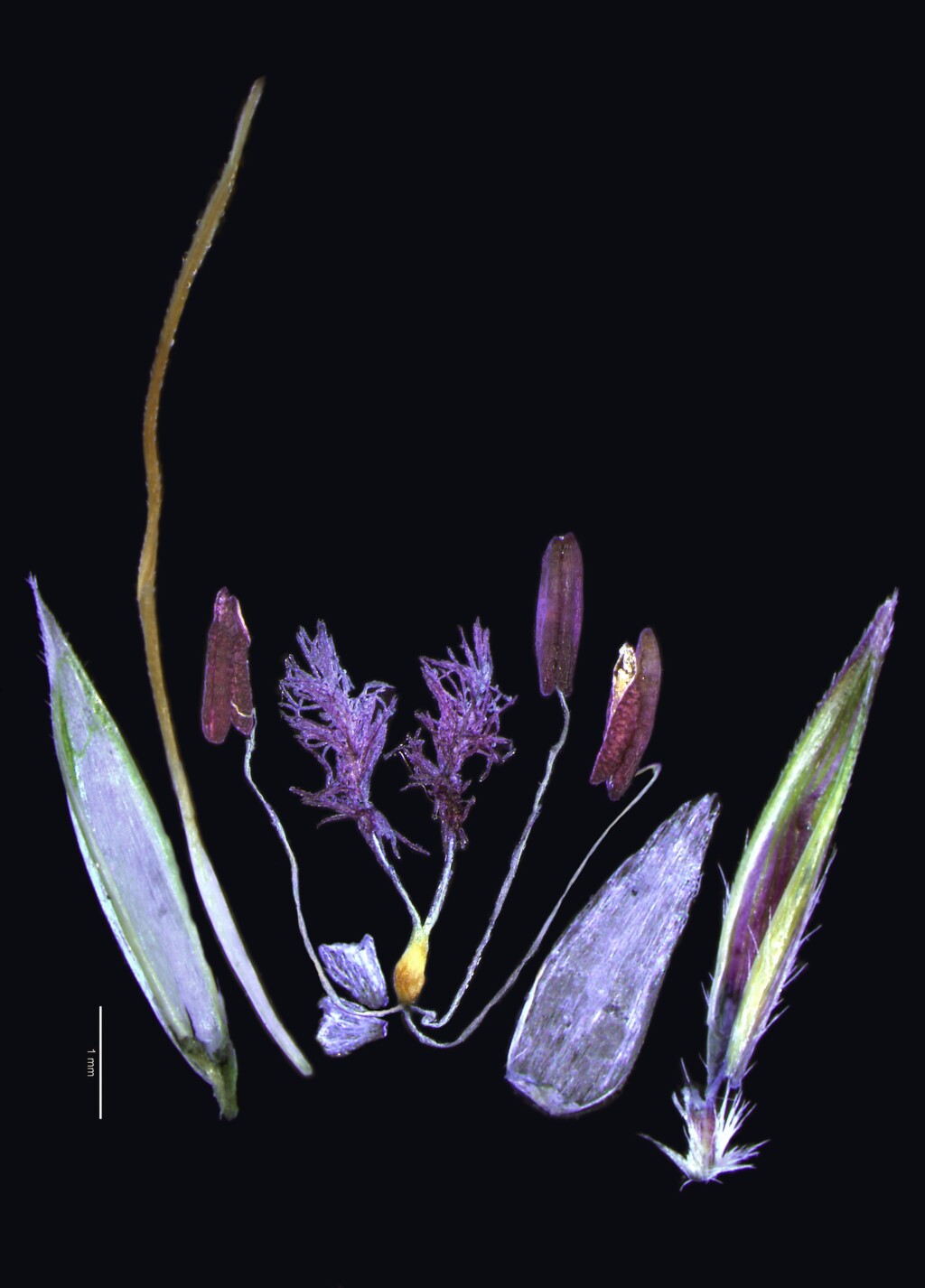Bothriochloa macra
(Steud.) S.T.Blake Red-leg GrassRhizomatous perennials, often reddish, culms ascending to erect, sometimes branched, to c. 80 cm high, nodes glabrous or shortly pubescent. Leaves glabrous, or with scattered, often tubercle-based hairs; blade to 20 cm long and 5 mm wide; ligule truncate, sometimes shortly ciliate, 1–2 mm long. Inflorescence with 2–6 racemes, each 2–9 cm long, arranged subdigitately, barely spreading; pedicellate spikelets sterile, reduced to a single glume 3–4 mm long (occasionally with a smaller second glume); sessile spikelets 5–7 mm long (excluding awn), subtended by a tuft of silky hairs up to c. half as long as spikelet; lower glume 5–7-nerved, firm, flattened dorsally, often with a distinct pit in the upper third; upper glume similar but keeled and thinner-textured, never pitted; sterile lemma slightly shorter than glumes, thinly membranous; fertile lemma 2–3 mm long, appearing as a mere broadening at the base of the brown, once or twice bent, twisting awn 15–20 mm long; palea minute or absent. Flowers all year, but mainly Dec.–Apr.
MuM, Wim, GleP, VVP, VRiv, RobP, MuF, GipP, OtP, Gold, CVU, GGr, DunT, NIS, EGL, EGU, WPro, HSF, HNF, VAlp. Also SA, Qld, NSW, NI (naturalised), ACT, Tas (naturalised). Common in grassland and grassy woodland communities in warmer parts of the State, particularly upper Murray and lower Goulburn River valleys, but rare in the Mallee and Wimmera. Locally abundant on the basalt plain immediately west of Melbourne.
East Gippsland populations (rocky, rain-shadow areas from Buchan eastward) differ slightly from those elsewhere in the state in having shortly pubescent nodes, rather smaller inflorescences and spikelets (the latter with consistently unpitted glumes and barely 5 mm long).
Walsh, N.G. (1994). Poaceae. In: Walsh, N.G.; Entwisle, T.J., Flora of Victoria Vol. 2, Ferns and Allied Plants, Conifers and Monocotyledons, pp. 356–627. Inkata Press, Melbourne.
 Spinning
Spinning


